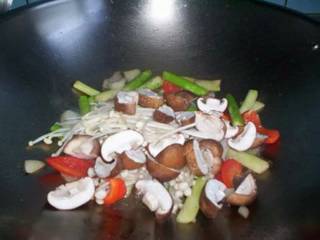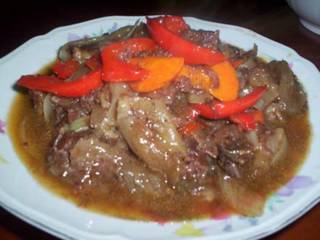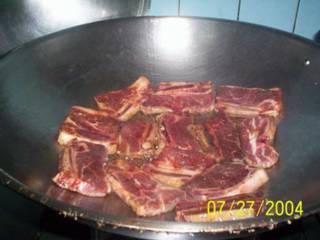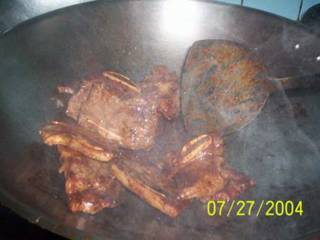A friend of mine came over for a cooking/baking session. We made Maja Blanca and Brownies (to follow). I got this recipe for the Maja from Rosemarie Lim's (demo) class on Native Kakanin. She's part owner of Caro and Marie, a well known school of cake decorating and culinary arts in Cebu.
On to the cooking!
We started with the Maja. My friend came with all the ingredients needed for the Maja and more. I was thinking it was high time for me to follow a recipe to the last dot. Or so I thought...
Maja Blanca


Mix together and bring to a boil:
3-1/2 coconut milk
3/4 to 1 c. sugar
So much for following the recipe...We decided to double the recipe but since the coconut milk (canned) was not enough, I used fresh milk to make up the difference. My friend also brought along a jar of preserved langka, which she thought would make a good flavoring for the Maja. So I was thinking of two Majas with different flavors. When it was time for us to mix the flavoring ingredient, my friend thought it was too much trouble having to divide the Maja into two before adding the final ingredient and suggested to just add both! What a radical idea! hahaha
Finally, she won me over (didn't take long!).
And the result? Not bad, not bad at all!
Additional notes/comments:
Adjust amount of sugar according to the sweetness of the flavoring ingredient added. Flavoring ingredient is usually added at 1/2 c. per recipe (I forgot to adjust the sugar before adding the langka, hence the maja came out more on the sweet side).
I didn't use any coloring for this recipe, the cream-style corn (instead of kernel) plus the langka imparted this yellowish tinge, which I thought was just right.
Quantity of cornstarch may be increased up to 1 c. if a firmer and thicker maja is desired. Note that the cornstarch is added when the coconut milk is already boiling otherwise it will take a long time for the mixture to thicken.
Make sure that when using freshly grated coconut, there are no brown bits from the husk as this will affect the color of the maja.
Maja Blanca was originally made from fresh carabao's milk and was therefore very white.
On to the cooking!
We started with the Maja. My friend came with all the ingredients needed for the Maja and more. I was thinking it was high time for me to follow a recipe to the last dot. Or so I thought...
Maja Blanca


Mix together and bring to a boil:
3-1/2 coconut milk
3/4 to 1 c. sugar
Stir in: 3/4 c. cornstarch dissolved in 3/4 c. evaporated milk. Add in desired ingredient (flavor) and coloring and stir until the mixture is thick. Spread at once into a bilao. Top with latik. To make latik: put 1/2 c. grated coconut (sapal) with 1/4 c. sugar on a frying pan, cook over medium heat while stirring constantly until golden brown.


|


|
Finally, she won me over (didn't take long!).
And the result? Not bad, not bad at all!
Additional notes/comments:
Adjust amount of sugar according to the sweetness of the flavoring ingredient added. Flavoring ingredient is usually added at 1/2 c. per recipe (I forgot to adjust the sugar before adding the langka, hence the maja came out more on the sweet side).
I didn't use any coloring for this recipe, the cream-style corn (instead of kernel) plus the langka imparted this yellowish tinge, which I thought was just right.
Quantity of cornstarch may be increased up to 1 c. if a firmer and thicker maja is desired. Note that the cornstarch is added when the coconut milk is already boiling otherwise it will take a long time for the mixture to thicken.
Make sure that when using freshly grated coconut, there are no brown bits from the husk as this will affect the color of the maja.
Maja Blanca was originally made from fresh carabao's milk and was therefore very white.





































